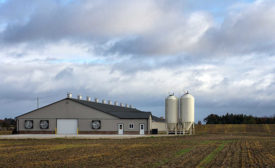Paul Bredwell, U.S. Poultry & Egg Association
Paul Bredwell is vice president of environmental programs for USPOULTRY. Contact him at pbredwell@uspoultry.org.
ARTICLES
USPOULTRY works with the EPA as the EPA reviews and likely revises Effluent Limitation Guidelines.
Read More
Commentary | Poultry Perspectives
Regulatory implications associated with an administration change
Read MorePoultry Perspectives
Addressing sustainability, welfare in poultry, egg industry
Groups unite to form Poultry and Egg Sustainability and Welfare Foundation.
Read More
Get our new eMagazine delivered to your inbox every month.
Stay in the know with The National Provisioner's comprehensive coverage of the meat and poultry processing industry.
SUBSCRIBE TODAY!Copyright ©2024. All Rights Reserved BNP Media.
Design, CMS, Hosting & Web Development :: ePublishing







